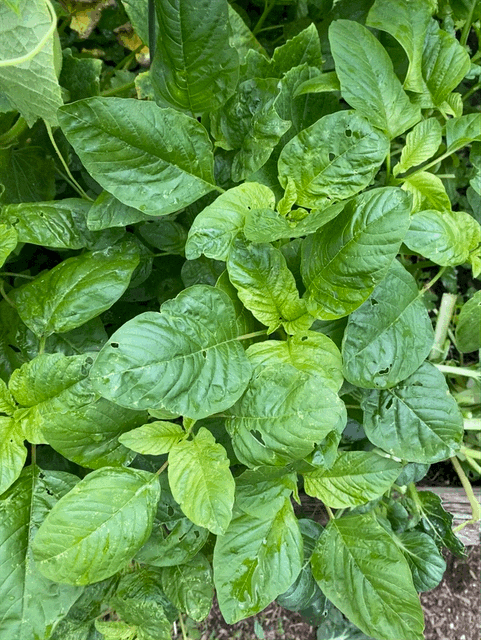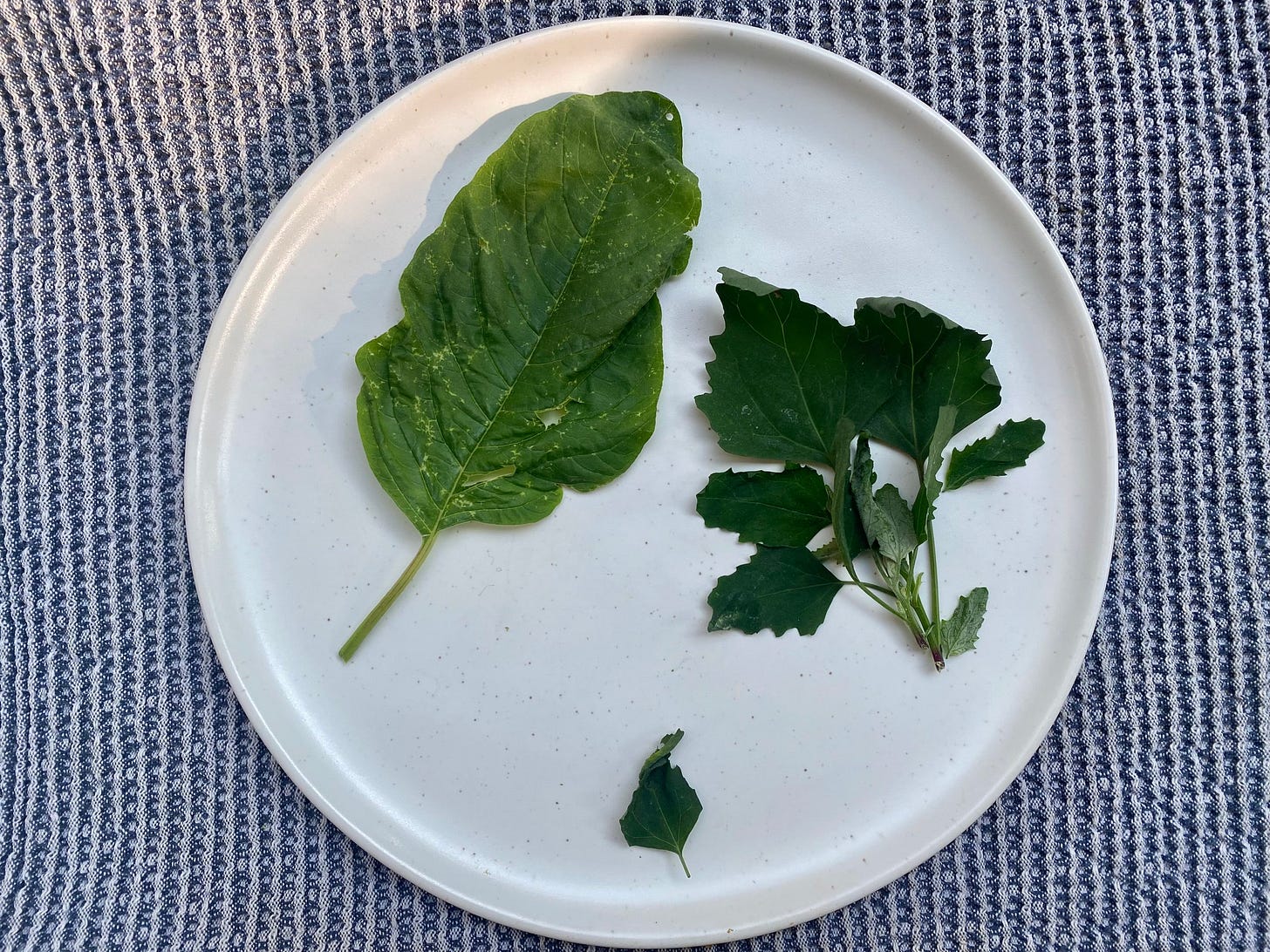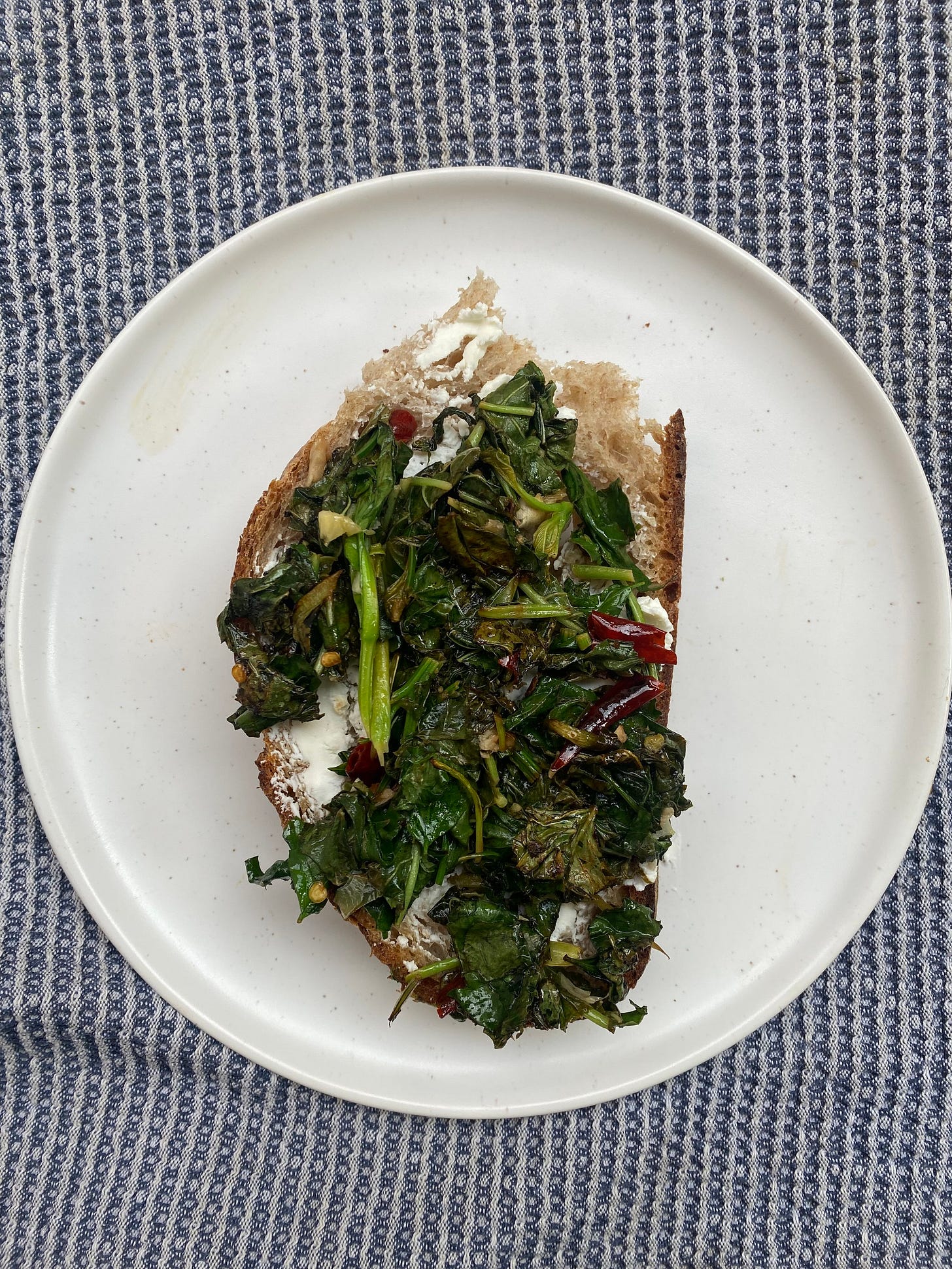Weeds magic
In backyard gardens, the weeds are sometimes the climate heroes.
I have a bed at the Moffat Street Community Garden in Brooklyn, and it it is thriving. It's a rectangular, consistent source of joy in my life.
Growing in it: arugula, cilantro, collards, tomatoes (soon, I hope), tomatillos (grew spontaneously!), basil, cucumbers and eggplant. And one sunflower that's going to blossom any day now.
And in addition, weeds, which I’m monitoring but also letting grow.

Weeds are tough scrappy underdogs. They grow against all odds — industrial pollution, pests, zealous gardeners. They thrive despite neglect — and in the face of active oppression.
The weeds always win. So why fight it?
Because the word “weed” is so negative, I’ve seen attempts to reword them — for example, “spontaneous urban plants,” which I like for its descriptiveness.
I’m going to call them “chill plants” because it’s fun and cute.
One chill plant is amaranth. Are you seeing it in your garden too? It's hardy and prolific, growing rapidly and yes, it will conquest other plants if left unchecked.

It's also a superfood, with nutritious greens and beautiful little red flowers that produce the grain that will feed the world. Its greens can be — and frequently are — used exactly like spinach. Its greens are popular in the Caribbean, where theyr’re called callaloo. I think of spinach when I think of saag paneer, but you can count on me using amaranth greens to make it at least once this summer.

Bottom line, you can use amaranth greens the same way you would use spinach. So it’s arbitrary to spend money to purchase spinach and eradicate amaranth.
They and other chill plants are precisely what I have in mind for building Climate Cookery — they’re environmentally resilient and “traditionally used” — or not commercialized. And they can make delicious, abundant meals for a lifetime.

